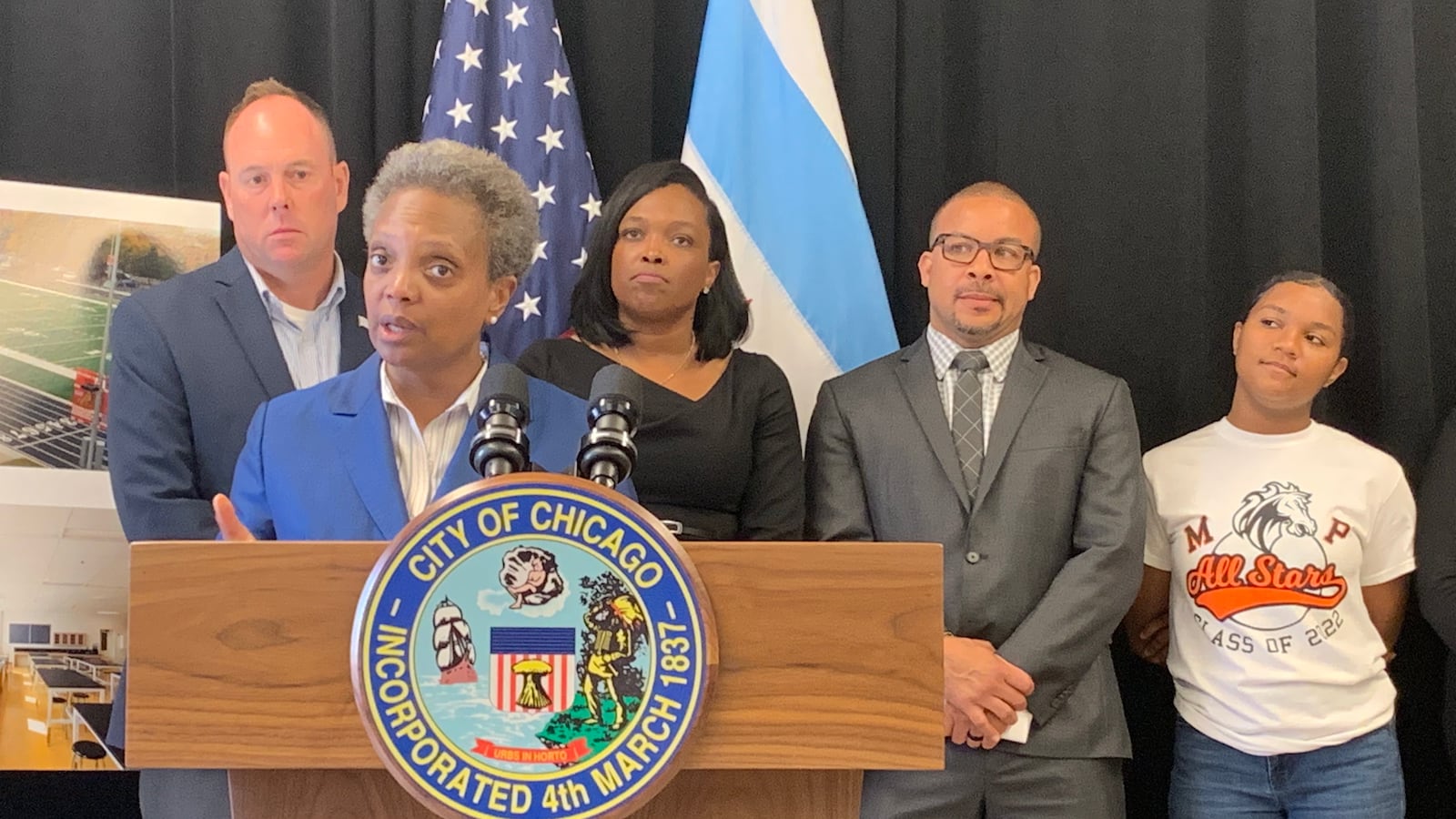Chicago Mayor Lori Lightfoot has said that her latest offer to the city’s teachers will make them among the highest-paid educators in the country.
The union has disregarded her offer, insisting the city lower class sizes, add support staff and put those guarantees in writing.
But salary and benefits remain critical, because they are among the few issues that a 1995 law permits the Chicago Teachers Union to strike over.
Related: A tale of two walkouts: Can Chicago learn from past teacher strikes?
Under the current Chicago union contract, beginning teachers make a base salary of just over $56,000 a year, while the most senior teachers with extra credentials make $108,242 a year.
Chicago district officials have characterized their current salary offer to teachers — a 16% cost-of-living raise over a five-year contract, with 3% in each of the first three years and 3.5% annually in the next two years — as generous and even “historic.”
The union wants more faster: a 5% annual raise in a three-year contract.
The district is offering to cover health insurance premiums, which are estimated to increase 6% annually, and to keep costs flat for teachers for the first three years.
“This is a significant benefit for CPS teachers and staff,” Lightfoot and schools chief Janice Jackson wrote on a blog post earlier this week. “Under this offer, teachers will continue to enjoy these benefits for five years at about the same rate they are paying now.”
When factoring in steps and lanes — the automatic hikes that teachers get for longevity and educational credits — how will the salary of Chicago teachers match their counterparts in other major urban areas?
In 2017-18, the last school year for which comparable data is available, Chicago ranked toward the top in pay for more experienced teachers — a master’s degree holder with 10 years of experience, for example — and 22nd out of the 124 largest districts for a first-year teacher. The ranking was compiled by the National Council on Teacher Quality, a nonpartisan policy and research center.
Kency Nittler, the organization’s teacher policy director, said, “Chicago teachers in comparison to other teachers in large districts are being paid relatively well.”
She said that the district’s offer to teachers is solid, and not outside the bounds of what districts regularly offer in negotiations.
Nittler added that, in a difficult work environment, raises may not be enough to retain teachers. That echoes the argument the Chicago Teachers Union has been making in calling for smaller class sizes and more support staff, such as nurses, social workers, and special education case managers.
“Those (calls) are coming from a place of ‘your salary alone is not enough,’” she said.
On pay, the latest public statements indicate the union and City Hall still differ. The union wants to increase the number of steps — to 25 — at which teachers will earn automatic raises for longevity.
But the two sides are apparently nearing agreement on higher minimum salaries for teacher aides and on instituting a schedule of automatic raises — like the “steps and lanes” hikes that teachers get for experience and educational credits.
The district also is offering to raise salaries on average by more than 8% for paraprofessionals and school-related personnel, with an immediate 14% pay hike for hard-to-staff nurse positions.
So what are the signs of a “good” deal? Experts are divided — often by their politics — on the answer.
Daniel DiSalvo, of the conservative Manhattan Institute think tank, said any pay raise or reduction in class size is a win for teachers because it makes teaching better compensated and less difficult.
“If you are reducing class sizes at the same time you are increasing pay, it’s extra generous,” DiSalvo said. He noted that some cuts to public education have been forced on states and districts by ballooning costs of rescuing underwater teacher pension funds.
Others argue that it will take significant pay bumps to compensate for decades of stagnant teacher wages and sometimes deep budget cuts to education.
Sylvia Allegretto, a labor economist at the University of California, Berkeley, argues that teacher salaries must be seen in a broader economic context. She points out that in the 1960s teaching was a relatively well-paid job for women when they had fewer opportunities. Now, women can choose among better paid and competitive jobs, so districts may need to offer more to attract quality candidates.
Pay was key in the wildcat teachers strikes that swept through Arizona, West Virginia and North Carolina last year. Denver teachers struck last winter over how and how much the district paid them. In Los Angeles, teachers rejected the district’s offer for retroactive raises, went on strike, and then essentially agreed to the same pay deal as before, but one that was sweetened by an increase in support services and lower class sizes.
U.S. teachers earn 60% less than workers in other professions requiring comparable education levels, according to a 2017 report from the Organization for Economic Cooperation and Development. It’s a phenomenon Allegretto calls the teacher pay penalty.
Some Chicago teachers say the job is impossible not because of low wages but because they feel overwhelmed by paperwork and struggling with too few resources to meet the complicated needs of their students.
That sentiment has been a consistent thread in the run-up to the strike and will likely be a theme on Wednesday night, when the union’s 700-member House of Delegates votes to set a possible strike date.
Have questions about the strike? Take our parent survey and we will get your questions answered.
Correction: This story was updated to say that Chicago’s first-year teacher pay ranks the district 22nd among the 124 largest urban districts, not toward the bottom. Chalkbeat regrets the error.

